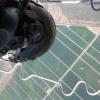Thoughts on Velocity aircraft
-
Members Online
- 802flyer
- MattCW
- planedoc
- thomas1142
- Utah20Gflyer
- Jayrod
- TuomoMooneyFlying
- Rsmithref
- BartReed
- midlifeflyer
- PhateX1337
- Stanton R
- Danb
- warbingtonmasonry
- TCW3
- Johnny_SA
- eman1200
- oelbrenner
- onautopilot
- Fly Boomer
- dzeleski
- Jason_Cincy
- jcovington
- Jake@BevanAviation
- aviatoreb
- theoriginalturk
- Rotorhead
- Echo
- 00-Negative
- 201er


Recommended Posts
Join the conversation
You can post now and register later. If you have an account, sign in now to post with your account.